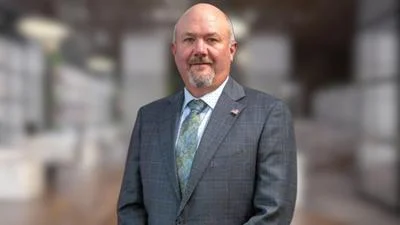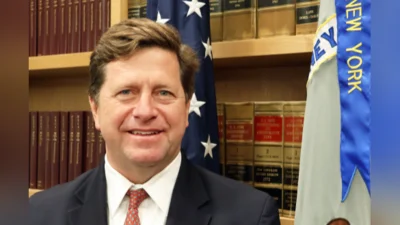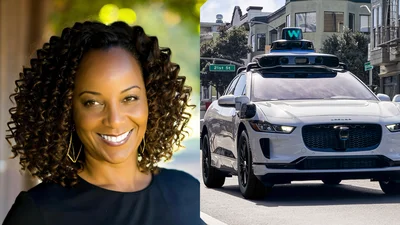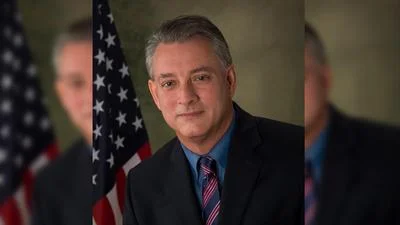The Congressional Record is a unique source of public documentation. It started in 1873, documenting nearly all the major and minor policies being discussed and debated.
“THE CRISIS IN EDUCATION IN AMERICA” mentioning the U.S. Dept of State was published in the Senate section on pages S7924-S7927 on July 17, 1996.
The publication is reproduced in full below:
THE CRISIS IN EDUCATION IN AMERICA
Mr. BENNETT. Mr. President, you and some others in this body have heard me say that the one experience that took me out of the private sector and brought me back into public life was my term as chairman of the Strategic Planning Commission for the Utah State Board of Education. I was happily serving as the chief executive of a very successful, functioning corporation when I was asked to take that assignment in public service. It brought me face to face with the current crisis in education.
I have been interested in that issue ever since. I was interested in this morning's Wall Street Journal where the following appeared. I would like to call it to the attention of the entire Senate and, hopefully, through the Congressional Record and C-SPAN, as wide an audience as possible. In this morning's Wall Street Journal there is the following article that I find incredible:
New York City's Cardinal John J. O'Connor has repeatedly made the city an extraordinary offer: Send me the lowest performing 5% of children presently in the public schools, and I will put them in Catholic schools--where they will succeed. The city's response: Silence.
In a more rational world, city officials would have jumped at the cardinal's invitation. It would have been a huge financial plus for the city. The annual per-pupil cost of Catholic elementary schools is $2,500 per year, about a third of what taxpayers now spend for the city's public schools.
Mr. President, I have had this debate with leaders of the Teachers' Association in Utah. Members of the National Education Association do not come to see me because they apparently know that I have already come to the conclusion that something must be done to break the monopoly that current teachers' unions have on the way education is conducted in this country.
The author of this article goes on to tell us his own experience with his own children. He tells us how he takes his children past the Catholic schools every morning, to enroll them in what are considered the best public schools in New York City. One day he decided he would go in and see what was going on in the Catholic schools, to compare it to what was happening in the public schools. He says, ``* * * I was impressed. I sat in, for example, as fourth-grade teacher Susan Viti conducted a review lesson on the geography of the Western United States.'' He goes on to describe the things that were done, and then he says:
I found myself wishing that my own son's fourth-grade teachers at nearby Public School 87, reputedly one of the best public schools in the city, were anywhere near as productive and as focused on basic schools as Miss Viti. Both my boys' teachers have wasted an enormous amount of time with empty verbiage about the evils of racism and sexism. By contrast, in Miss Viti's class and all other Catholic school classes I attended, it was taken for granted that a real education is the best antidote to prejudice.
Miss Viti earns $21,000 a year, $8,000 less than a first-year public-school teacher. ``I've taught in an all-white affluent suburban school, where I made over $40,000. This time I wanted to do something good for society, and I am lucky enough to be able to afford to do it. I am trying to instill in my students that whatever their life situation is now, they can succeed if they work hard and study.''
Mr. President, monopoly is a terrible thing, whether it is in an economy or in an intellectual circumstance. Establishing a monopoly that prevents people from looking for other ideas or other ways of doing something is the best way to guarantee stagnation. What we have in public education now is a monopoly, firmly enforced by the teachers' unions and geared to prevent any kind of intellectual competition.
We have seen it on the floor of this Chamber. Again and again last year, we tried to pass an appropriations bill for the District of Columbia. Certainly, there is no place in the world that needs appropriations more than the District of Columbia. Mired down in financial disaster and management chaos the District needed that money as quickly as it could come. Yet because we put into that bill the opportunity for experimentation on just that situation described in this morning's story in the Journal, there were people on this floor who filibustered against that appropriations bill, willing to hold up needed financial support for the District, all in the name of preserving an educational monopoly for the teachers' unions.
Now, I have very good friends in the Utah Teachers Association who come to me and say, ``It is unconstitutional for you to spend public money on a private institution, particularly a private institution that has connection to a religion.'' Mr. President, we crossed that line, successfully, 50 years ago. All of us are familiar with the GI bills, considered by many to be the most successful Government program ever, the most successful expenditure of Government money to help people's lives that has ever taken place in the history of the United States. I have heard the GI bill being described thusly here on the floor by some of my colleagues. What do we do in the GI bill? We say to individuals,
``Here is the money that we promised you to help you with your education. Now you make the decision as to where that money will be spent.'' Is it unconstitutional to someone under the GI bill to take that money and go to the University of Notre Dame just because the University of Notre Dame is affiliated with the Catholic Church? Is it unconstitutional for you to take that money to go to Georgetown University here in the District just because Georgetown University is run by the Jesuits? Of course, not. We have long since come to the conclusion that the money follows the student, not that it goes to support the institution.
Would it be unconstitutional for the city of New York to take Cardinal O'Connor up on his offer and say we will give you the 5-
percent lowest students, we will give you the 5-percent worst problems we have, allow the money to follow the students, and let you take care of it for us? No, the constitutional precedent has been firmly established. What are they afraid of? They are afraid of saving money? They are afraid of doing better by the children? No, they are afraid of the political retaliation of the teachers' union.
The article goes on to describe that retaliation in some detail. Mr. President, I ask unanimous consent that the entire article be printed in the Record at the conclusion of my remarks.
The PRESIDING OFFICER. Without objection, it is so ordered.
(See exhibit 1.)
Mr. BENNETT. Mr. President, there is no issue that we face in this body more serious than the challenge of educating our young people. That is not a cliche. That is a statement of our primary survival challenge of the future. Talk to CEO's, talk to personnel directors around the country, and they tell you more and more the primary challenge we have long term in this country is maintaining a work force that can survive international competition. Talk to many of these CEO's and they tell you that more and more of their budget is going to pay for remedial learning skills for their new hires. They are hiring people who cannot read the instructions that they are given to carry out their work. They are hiring people who cannot figure enough to even make change in a retail situation.
Recognizing that the schools will not teach these people to read and figure, they are beginning to allocate more and more of their corporate dollars to give this kind of education themselves. It is potentially, as I say, Mr. President, the single most important issue we face. I think with the collapse of the Soviet Union, this has become the long-
term survival issue for the United States. Yet we allow ourselves to insist that the status quo, producing these kinds of results, is what must be maintained at all costs. We allow ourselves to say we will not even experiment with a voucher system that might challenge the present monopoly. We will not even allow an educational system that is willing to try and experiment with 5 percent of the kids who are doing the worst in our Nation's largest city, to see what might happen with that experiment.
What are the teachers' unions afraid of, when challenged with the opportunity to have an experiment of this kind? They are afraid of people like Miss Viti, described in the article, demonstrating to all of the world the bankruptcy of the present circumstance. Education is the only place I know, Mr. President, where professionals--and I consider teachers to be professionals--are willing to accept less money in order to avoid working for public payroll. In every other circumstance, the professionals earn more money when they get out of the public payroll. Lawyers in private practice earn more than lawyers who work for municipalities and State governments and the Federal Government. Doctors in private practice earn more than doctors who work for the Public Health Service. But in education, teachers earn less who work in private schools than those who work for the public. Why do they do it? Because as Miss Viti says, ``I wanted to do something good for society. I am lucky to be able to afford to do it.''
Mr. President, I will return to this from time to time. I am not on the appropriate committee for a variety of reasons which we understand around here. The committee assignments come by virtue of the State that you represent and the interests that you have in seeing that State is properly represented. But I could not pass the opportunity to call to the attention of the Senate this incredible statement in this morning's paper, whereby the Nation's teachers' union, working through its affiliates in New York State, have denied the lowest 5 percent of the city of New York the opportunity to try something new, and have thus condemned those 5 percent to a continued future of bleakness and lack of opportunity.
A final demonstration of this, Mr. President, again, from the information contained in the article comparing what happens in New York City schools--the public schools that are spending three times as much as the Catholic schools--in terms of the results. Here is the conclusion that comes from the New York State Department of Education. This is not a conclusion that comes from the managers of the private schools, the Catholic schools. This is the conclusion that comes from the New York State officials themselves:
Catholic schools with 81 percent to 100 percent minority composition outscored New York City public schools with the same percentage of minority enrollment in grade 3 reading . .
.
In grade 3 reading, they were 17 percent better; in grade 3 mathematics, 10 percent better; in grade 5 writing, 6 percent better; in grade 6 reading, 10 percent better; in grade 6 mathematics, 18 percent better.
A Rand Corp. study compared the performance of children from New York City's public schools and Catholic high schools and came up with these statistics. Again, this is not from the Catholic school system itself; this is from an outside observer known for its excellence and its objectivity, the Rand Corp.:
Only 25 percent of the public school students graduated at all . . .
Let me repeat that statistic, Mr. President. It is staggering.
Only 25 percent of the public school students graduated at all, and only 16 percent took the Scholastic Aptitude Test.
By shameful contrast, the small ``elite'' of public school students who graduated and took the SAT averaged only 642 for those in neighborhood schools and 715 for those in magnet schools.
Here is the shameful contrast: 25 percent of the public school students graduated, and 16 percent took the SAT; and 95 percent of the Catholic school children graduated, and 75 percent took the SAT's. The Catholic school students scored an average of 815 on the SAT, compared to 642 of the public schools.
Once again, Mr. President, let me stress that these are in schools where the minority makeup is identical to the minority makeup in the public schools. If there is ever a statistical case to be made for the fact that we need to experiment with this kind of education and break the monopoly that the teachers' union has established and is maintaining on public education, this is it.
I thank the Chair for his indulgence. As I said, I will return to this subject from time to time because I consider it the Nation's No. 1 survival issue in the long term.
I yield the floor.
Exhibit 1
Why the Catholic School Model Is Taboo
(By Sol Stern)
New York City's Cardinal John J. O'Connor has repeatedly made the city an extraordinary offer: Send me the lowest-performing 5% of children presently in the public schools, and I will put them in Catholic Schools--where they will succeed. The city's response: silence.
In a more rational world, city officials would have jumped at the cardinal's invitation. It would have jumped at the cardinal's invitation. It would have been a huge financial plus for the city. The annual per-pupil cost of Catholic elementary schools is $2,500 per year, about a third of what taxpayers now spend for the city's public schools.
no idle boast
More important, thousands more disadvantaged children would finish school and become productive citizens. For Cardinal O'Connor's claim that Catholic schools would do a better job than public schools is no idle boast. In 1990 the RAND Corporation compared the performance of children from New York City's public and Catholic high schools. Only 25% of the public-school students graduated at all, and only 16% took the Scholastic Aptitude Test, vs. 95% and 75% of Catholic-school students, respectively, Catholic-school students scored an average of 815 on the SAT. By shameful contrast, the small ``elite'' of public-school students who graduated and took the SAT averaged only 642 for those in neighborhood schools and 715 for those in magnet schools.
In 1993 the New York State Department of Education compared city schools with the highest levels of minority enrollment. Conclusion: ``Catholic schools with 81% to 100% minority composition outscored New York City public schools with the same percentage of minority enrollment in Grade 3 reading
(+17%), Grade 3 mathematics (+10%), Grade 5 writing (+6%), Grade 6 reading (+10%) and Grade 6 mathematics (+11%).''
Yet most of the elite, in New York and elsewhere, is resolutely uninterested in the Catholic schools' success. In part this reflects the enormous power of teachers' unions, fierce opponents of anything that threatens their monopoly on education. In part it reflects a secular discomfort with religious institutions.
I myself have felt this discomfort over the years, walking past Catholic schools like St. Gregory the Great, near my Manhattan home. Every morning, as I took my sons to public school, I couldn't help noticing the well-behaved black and Hispanic children in their neat uniforms entering the drab parish building. But my curiosity never led me past the imposing crucifix looking down from the roof, which evoked childhood images of Catholic anti-Semitism and clerical obscurantism.
Finally, earlier this year, I ventured in, and I was impressed. I sat in, for example, as fourth-grade teacher Susan Viti conducted a review lesson on the geography of the Western United States. All the children were completely engaged and had obviously done their homework. They were able to answer each of her questions about the principal cities and capitals of the Western states--some of which I couldn't name--and the topography and natural resources of the region. ``Which minerals would be found in the Rocky Mountains?'' Miss Viti asked. Eager hands shot up. Miss Viti used the lesson to expand the students' vocabulary: when the children wrote things down, she insisted on proper grammar and spelling.
I found myself wishing that my own son's fourth-grade teachers at nearby Public School 87, reputedly one of the best public schools in the city, were anywhere near as productive and as focused on basic skills as Miss Viti. Both my boys' teachers have wasted an enormous amount of time with empty verbiage about the evils of racism and sexism. By contrast, in Miss Viti's class and in all the other Catholic school classes I visited, it was taken for granted that a real education is the best antidote to prejudice.
Miss Viti earns $21,000 a year, $8,000 less than a first-year public-school teacher. ``I've taught in an all-white, affluent suburban school, where I made over $40,000,'' she says. ``This time I wanted to do something good for society, and I am lucky enough to be able to afford to do it. I am trying to instill in my students that whatever their life situation is now, they can succeed if they work hard and study.''
You might expect liberals, self-styled champions of disadvantaged children, to applaud the commitment and sacrifice of educators like Susan Viti. You might even expect them to look for ways of getting government money to these underfunded schools. Instead, they've done their best to make sure the wall of separation between church and state remains impenetrable. Liberal child-advocacy groups tout an endless array of ``prevention'' programs that are supposed to stave off delinquency, dropping out of school and teen pregnancy--yet they consistently ignore Catholic schools, which nearly always succeed in preventing these pathologies.
Read the chapter on education in Hillary Clinton's ``It Takes a Village.'' Mrs. Clinton advocates an alphabet soup of education programs for poor kids, but says not a word about Catholic schools. Similarly, in his books on education and inner-city ghettos, Jonathan Kozol offers vivid tours of decrepit public schools in places like the South Bronx, but he never stops at the many Catholic schools that are succeeding a few blocks away.
Why are Catholic schools taboo among those who talk loudest about compassion for the downtrodden? It's hard to escape the conclusion that one of the most powerful reasons is liberals' alliance with the teachers' unions, which have poured hundreds of millions of dollars into the campaign coffers of liberal candidates around the country. Two weeks ago I attended the National Education Association convention in Washington, a week-long pep rally for Bill Clinton punctuated by ritual denunciations of privatization.
Before the teachers' unions rise to political power, it was not unusual to see urban Democrats like former New York Gov. Mario Cuomo support government aid to Catholic schools. Mr. Cuomo's flip-flop on this issue is especially revealing. In 1974, when he first ran for public office, Mr. Cuomo wrote a letter to potential supporters: ``I've spent more than 15 years . . . arguing for aid to private schools,'' he wrote. ``If you believe aid is a good thing, then you are the good people. If you believe it, then it's your moral obligation, as it is my own, to do something about it. . . . Let's try tax-credit plans and anything else that offers any help.''
Mr. Cuomo soon learned his lesson. In his published diaries he wrote: ``Teachers are perhaps the most effective of all the state's unions. If they go all-out, it will mean telephones and vigorous statewide support. It will also mean some money.'' In his 1982 campaign for governor, Mr. Cuomo gave a speech trumpeting the primacy of public education and the rights of teachers. He won the union's enthusiastic endorsement against Ed Koch in the Democratic primary. Over the next 12 years, in private meetings with Catholic leaders, Gov. Cuomo would declare that he still supported tax relief for parochial school parents. Then he would take a completely different position in public. For example, in 1984 he acknowledged that giving tax credits for parochial-school tuition was ``clearly constitutional'' under a recent Supreme Court decision--but he refused to support such a plan.
Politically controlled schools are unlikely to improve much without strong pressure from outside. Thus, the case for government aid to Catholic schools is now more compelling than ever, if only to provide the competitive pressure to force state schools to change. And the conventional wisdom that government is constitutionally prohibited from aiding Catholic schools has been undermined by several recent U.S. Supreme Court decisions.
sucker's trap
Since the powerful teachers' unions vehemently oppose any form of government aid to Catholic schools, reformers are often skittish about advocating vouchers or tuition tax credits, fearing that will end the public-school reform conversation before it begins. But to abandon aid to Catholic schools in the name of public-school reform is a sucker's trap. We have ended up with no aid to Catholic schools and no real public-school reform either.
Catholic schools are a valuable public resource not just because they profoundly benefit the children who enroll in them. They also challenge the public-school monopoly, constantly reminding us that the neediest kids are educable and that spending extravagant sums of money isn't the answer. No one who cares about reviving our failing public schools can afford to ignore this inspiring laboratory of reform.
Mr. BENNETT. I suggest the absence of a quorum.
The PRESIDING OFFICER. The clerk will call the roll.
The legislative clerk proceeded to call the roll.
Mr. PRYOR. Mr. President, I ask unanimous consent that the order for the quorum call be rescinded.
The PRESIDING OFFICER. Without objection, it is so ordered.
Mr. PRYOR. Mr. President, I assume we are in morning business. I ask unanimous consent I may proceed for no more than 10 minutes.
The PRESIDING OFFICER. The Senate is in morning business and the Senator is recognized for 10 minutes, without objection.
____________________








